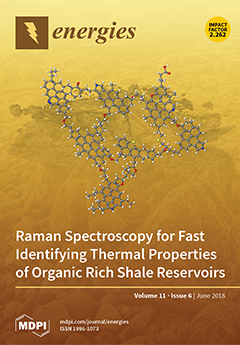Open AccessArticle
Volatility Spillovers between Energy and Agricultural Markets: A Critical Appraisal of Theory and Practice
by
Chia-Lin Chang 1 , Yiying Li 2 and Michael McAleer 3,4,5,6,7,*
, Yiying Li 2 and Michael McAleer 3,4,5,6,7,*
1
Department of Applied Economics, Department of Finance, National Chung Hsing University, 40227 Taichung, Taiwan
2
Department of Quantitative Finance, National Tsing Hua University, 30013 Hsinchu, Taiwan
3
Department of Finance, Asia University, 41354 Taichung, Taiwan
4
Discipline of Business Analytics, University of Sydney Business School, Sydney, NSW 2006, Australia
5
Econometric Institute, Erasmus School of Economics, Erasmus University Rotterdam, 3062 PA Rotterdam, The Netherlands
6
Department of Economic Analysis and ICAE, Complutense University of Madrid, 28040 Madrid, Spain
7
Institute of Advanced Sciences, Yokohama National University, 240-8501 Yokohama, Japan
Cited by 28 | Viewed by 4587
Abstract
Energy and agricultural commodities and markets have been examined extensively, albeit separately, for a number of years. In the energy literature, the returns, volatility and volatility spillovers (namely, the delayed effect of a returns shock in one asset on the subsequent volatility or
[...] Read more.
Energy and agricultural commodities and markets have been examined extensively, albeit separately, for a number of years. In the energy literature, the returns, volatility and volatility spillovers (namely, the delayed effect of a returns shock in one asset on the subsequent volatility or covolatility in another asset), among alternative energy commodities, such as oil, gasoline and ethanol across different markets, have been analysed using a variety of univariate and multivariate models, estimation techniques, data sets, and time frequencies. A similar comment applies to the separate theoretical and empirical analysis of a wide range of agricultural commodities and markets. Given the recent interest and emphasis in bio-fuels and green energy, especially bio-ethanol, which is derived from a range of agricultural products, it is not surprising that there is a topical and developing literature on the spillovers between energy and agricultural markets. Modelling and testing spillovers between the energy and agricultural markets has typically been based on estimating multivariate conditional volatility models, specifically the Baba, Engle, Kraft, and Kroner (BEKK) and dynamic conditional correlation (DCC) models. A serious technical deficiency is that the Quasi-Maximum Likelihood Estimates (QMLE) of a Full BEKK matrix, which is typically estimated in examining volatility spillover effects, has no asymptotic properties, except by assumption, so that no valid statistical test of volatility spillovers is possible. Some papers in the literature have used the DCC model to test for volatility spillovers. However, it is well known in the financial econometrics literature that the DCC model has no regularity conditions, and that the QMLE of the parameters of DCC has no asymptotic properties, so that there is no valid statistical testing of volatility spillovers. The purpose of the paper is to evaluate the theory and practice in testing for volatility spillovers between energy and agricultural markets using the multivariate Full BEKK and DCC models, and to make recommendations as to how such spillovers might be tested using valid statistical techniques. Three new definitions of volatility and covolatility spillovers are given, and the different models used in empirical applications are evaluated in terms of the new definitions and statistical criteria.
Full article





